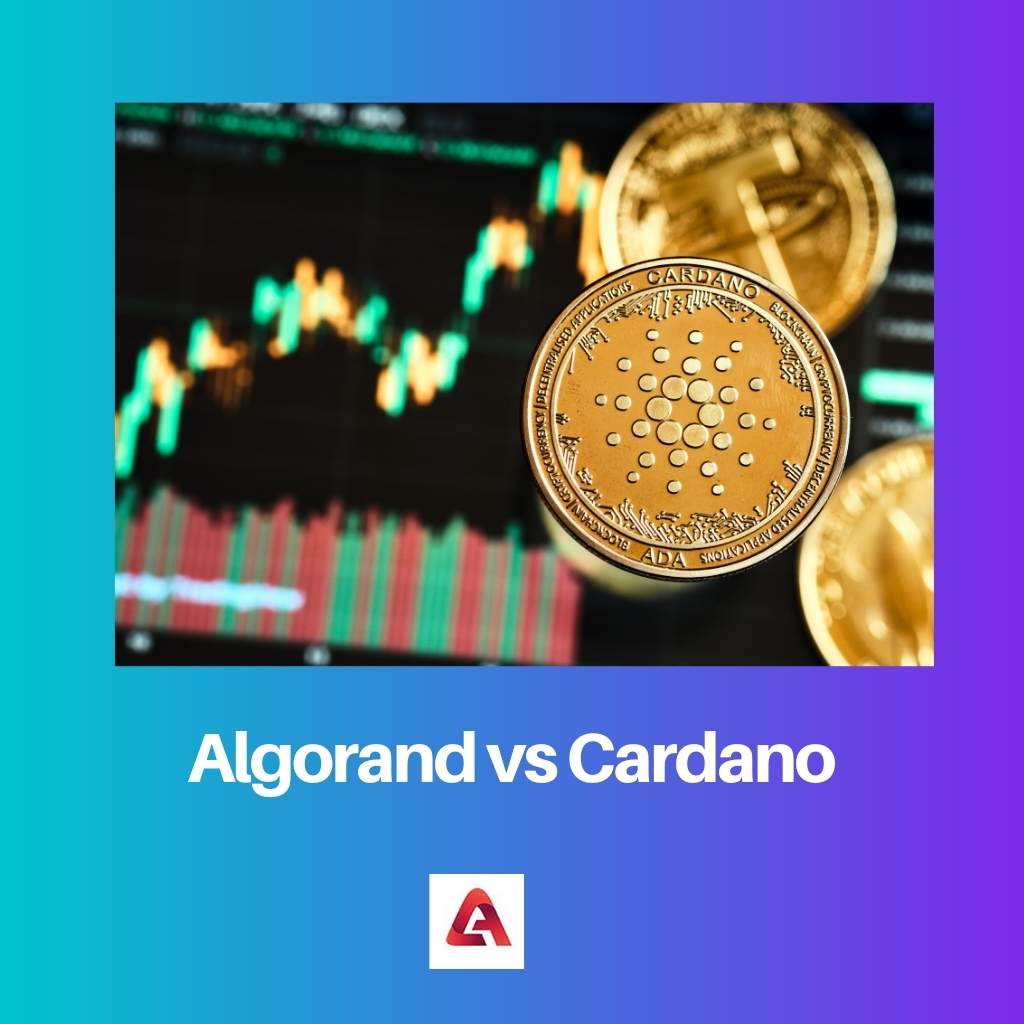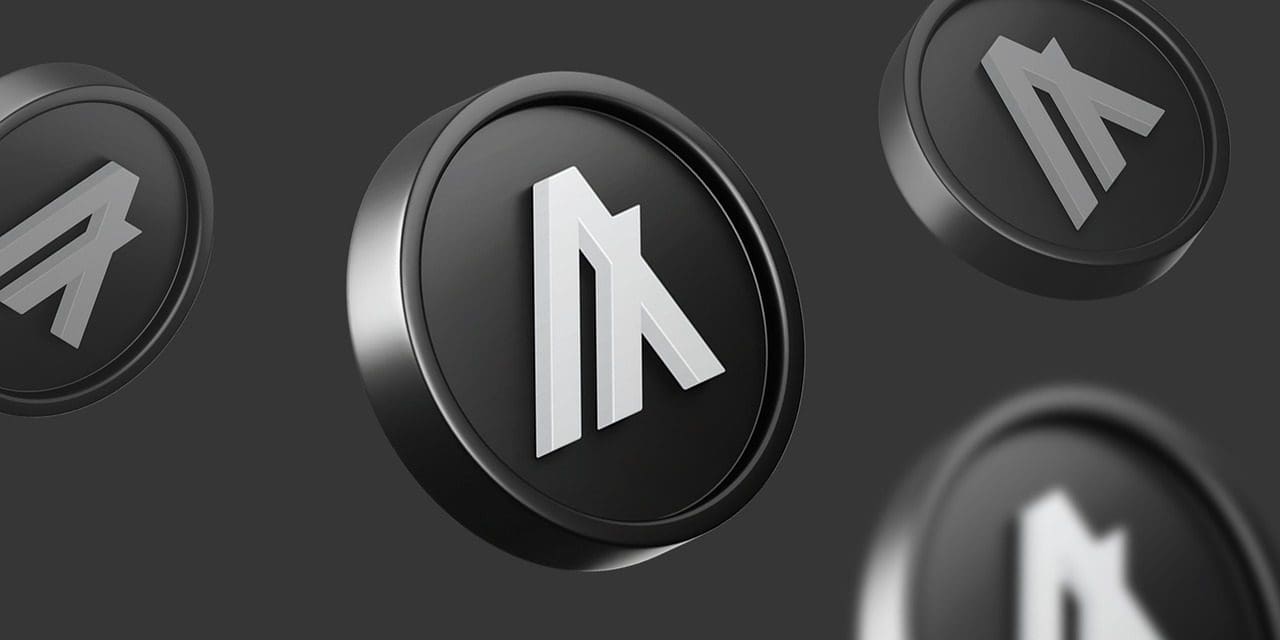Algorand and Cardano are both blockchain platforms designed for decentralized applications, but with different approaches. Algorand employs a pure proof-of-stake consensus mechanism for high-speed transactions and scalability. Cardano, on the other hand, focuses on a layered architecture, emphasizing academic rigor and a sustainable ecosystem for smart contract development.
Key Takeaways
- Algorand uses pure proof-of-stake (PPoS) consensus, while Cardano uses a hybrid consensus model.
- Algorand has a higher TPS (transactions per second) rate than Cardano.
- Algorand’s token is ALGO, while Cardano’s is ADA.
Algorand vs Cardano
Algorand aims to provide a fast and secure blockchain platform that can support a wide range of decentralized applications (dApps) and smart contracts. Cardano aims to provide a scalable and sustainable blockchain platform that can support a wide range of decentralized applications and use cases.

The platform of Algorand was launched and released in the year 2019 in June. This was launched to solve the problem related to the blockchain.
The Cardano is a platform that was launched On 29th September 2017. This was invented by Charles Hoskinson, who was the CEO and Co-founder of Ethereum.
Comparison Table
| Feature | Algorand (ALGO) | Cardano (ADA) |
|---|---|---|
| Consensus Mechanism | Pure Proof-of-Stake (PPoS) | Ouroboros Proof-of-Stake (PoS) |
| Transaction Speed | ~4,600 TPS (transactions per second) | ~250 TPS |
| Transaction Fees | Very low, close to negligible | Lower than Ethereum, around 0.17 ADA (variable) |
| Scalability | Achieved through PPoS, designed for high transaction volume | Layered architecture with potential for future scaling solutions |
| Smart Contract Language | Supports multiple languages (Java, Python, Go) | Haskell (own language, Plutus for smart contracts) |
| Development Approach | Focuses on speed and efficiency | More academic and research-driven, prioritizes security and scalability in the long term |
What is Algorand?
Algorand is a blockchain platform designed to address the scalability and decentralization challenges faced by traditional blockchain networks. Founded by Silvio Micali, a renowned computer scientist and Turing Award winner, Algorand aims to provide a scalable, secure, and efficient blockchain infrastructure.
Core Principles
Algorand is built on the following core principles:
Pure Proof of Stake (PPoS)
Algorand utilizes a Pure Proof of Stake consensus algorithm, where users are randomly selected to propose and validate blocks. This approach enhances security, reduces the risk of centralization, and ensures decentralization.
Byzantine Agreement (BA*)
Algorand employs a Byzantine Agreement-based protocol for achieving consensus among participants. This ensures that the network can reach agreement even when a portion of nodes is malicious or faulty.
Key Features
Transaction Throughput
Algorand boasts high transaction throughput, capable of processing thousands of transactions per second (TPS). This makes it suitable for applications requiring quick and scalable transactions.
Security
The PPoS consensus mechanism, combined with Byzantine Agreement, provides a high level of security against attacks. The protocol’s randomness selection process further enhances the security of the network.
Fast Finality
Algorand achieves fast finality, meaning that once a block is added to the blockchain, it is considered final and cannot be reversed. This quick confirmation time enhances the user experience and is crucial for applications requiring immediate settlement.
Token Standard: ASA (Algorand Standard Asset)
ASA allows the creation and management of various types of tokens on the Algorand blockchain. This feature facilitates the development of decentralized applications (DApps) and tokenized assets.
Algorand Smart Contracts
Algorand Smart Contracts (ASC1.0)
ASC1.0 is Algorand’s smart contract platform, enabling developers to create and deploy decentralized applications. It is designed for efficiency and simplicity, with features like atomic transactions, enabling multiple operations to be executed atomically.
Algorand Smart Contracts (ASC1.1)
ASC1.1 introduces stateful smart contracts, allowing developers to create more complex and sophisticated applications by maintaining state within the smart contract itself. This opens up new possibilities for decentralized finance (DeFi) and other advanced use cases.
Algorand Ecosystem
Algorand Foundation
The Algorand Foundation plays a key role in fostering the growth and development of the Algorand ecosystem. It supports research, education, and innovation, aiming to create a vibrant and inclusive community.
Algorand Improvement Proposals (AIPs)
AIPs are proposals for making changes and improvements to the Algorand blockchain. The community can submit and discuss AIPs, contributing to the ongoing evolution of the platform.

What is Cardano?
Cardano is a third-generation blockchain platform that aims to provide a more secure and sustainable infrastructure for the development of decentralized applications (DApps) and smart contracts. Launched in 2015 by Input Output Hong Kong (IOHK), a blockchain research and development company, Cardano has gained recognition for its commitment to scientific research, peer-reviewed development, and a layered architecture.
Cardano’s Foundational Principles
1. Scientific Approach
Cardano adopts a scientific philosophy, integrating academic research and formal methods into its development process. This commitment enhances the reliability and security of the platform, ensuring that changes and upgrades are rigorously tested and verified.
2. Layered Architecture
Cardano’s architecture is divided into two main layers: the Cardano Settlement Layer (CSL) and the Cardano Computation Layer (CCL). This separation allows for greater flexibility and scalability while maintaining a robust and secure foundation.
Core Components of Cardano
1. Ouroboros Consensus Algorithm
Cardano uses the Ouroboros Proof-of-Stake (PoS) consensus algorithm, which divides time into epochs and slots. Stakeholders, or ADA holders, participate in the consensus process by staking their tokens, contributing to the security and decentralization of the network.
2. Ada Cryptocurrency
Ada is the native cryptocurrency of the Cardano platform. It serves as a means of exchange within the network and facilitates transactions, staking, and smart contract execution.
3. Plutus Smart Contract Platform
Cardano incorporates the Plutus platform for smart contract development. Plutus utilizes Haskell-based scripting language and allows developers to create complex, secure, and scalable smart contracts on the Cardano blockchain.
4. Marlowe: Financial Smart Contracts
Marlowe is a domain-specific language for financial smart contracts on Cardano. It targets users with limited programming experience, enabling them to create and execute financial agreements on the blockchain.
Governance and Sustainability
1. Decentralized Governance
Cardano employs a decentralized governance model that empowers ADA holders to participate in decision-making processes. The Voltaire phase introduced Project Catalyst, a decentralized funding mechanism allowing the community to propose and vote on development initiatives.
2. Treasury System
To ensure long-term sustainability, Cardano features a treasury system. A portion of transaction fees is allocated to the treasury, providing funds for ongoing development, marketing, and community initiatives.
Interoperability and Partnerships
1. Cross-Chain Compatibility
Cardano aims to enhance interoperability with other blockchains, fostering collaboration and communication between different ecosystems. Initiatives like the Cardano- Ethereum bridge contribute to achieving this goal.
2. Collaborations and Alliances
Cardano has formed partnerships with various organizations, including academic institutions, governments, and enterprises. These collaborations aim to promote blockchain education, research, and real-world adoption.
Future Developments and Roadmap
Cardano continues to evolve with a clear roadmap for the future. Upcoming developments include the Basho phase, focusing on scalability, and the Voltaire phase, enhancing governance and sustainability. These advancements position Cardano as a formidable player in the blockchain space, driven by innovation and a commitment to scientific principles.

Main Differences Between Algorand and Cardano
- Consensus Mechanism:
- Algorand: Utilizes a pure proof-of-stake (PPoS) consensus algorithm where a randomly selected group of token holders reaches consensus on the next block.
- Cardano: Implements a proof-of-stake (PoS) consensus mechanism with the Ouroboros protocol, which involves a set of stake pools participating in the block creation process.
- Transaction Throughput:
- Algorand: Boasts high transaction throughput, capable of processing thousands of transactions per second.
- Cardano: Aims for scalability and high throughput but its final performance may depend on the implementation of various protocol upgrades.
- Smart Contracts:
- Algorand: Supports smart contracts using its Algorand Smart Contracts (ASC1) platform, allowing developers to create decentralized applications (DApps).
- Cardano: Introduces smart contract functionality through the Alonzo upgrade, enabling the creation of decentralized applications on the Cardano blockchain.
- Governance Model:
- Algorand: Employs a permissionless and open governance model, allowing token holders to participate in decision-making processes through on-chain voting.
- Cardano: Adopts a decentralized governance model where ADA holders can participate in the decision-making process through a treasury system and voting.
- Development Approach:
- Algorand: Uses a layer-1 approach, aiming to provide a comprehensive blockchain solution with built-in features like smart contracts.
- Cardano: Takes a layered approach with separate settlement and computation layers, allowing for flexibility and scalability.
- Token Standard:
- Algorand: Supports the Algorand Standard Assets (ASA) protocol for the creation and management of tokens on its blockchain.
- Cardano: Utilizes the native ADA token and allows the creation of custom tokens on the Cardano blockchain.
- Security Model:
- Algorand: Emphasizes security through its consensus algorithm, reducing the risk of centralization and potential attacks.
- Cardano: Prioritizes security through its layered architecture and formal verification methods to ensure the correctness of its protocols.
- Decentralization Philosophy:
- Algorand: Focuses on achieving decentralization through a randomized block proposal mechanism, aiming to prevent the concentration of power.
- Cardano: Strives for decentralization by promoting a wide distribution of stake pools and encouraging community participation in governance.
- Adoption and Maturity:
- Algorand: Has been in existence since 2019 and has gained adoption in various industries, showcasing a mature and actively developed ecosystem.
- Cardano: Has been under development since 2015, with the introduction of smart contracts in 2021, indicating a gradual maturation of the platform.


I appreciated the detailed explanation about the technologies and the comparison table. It makes it easier to understand the key differences between Algorand and Cardano.
Absolutely, the comparison table is particularly helpful in distinguishing the unique characteristics of each technology.
The comparison between Algorand and Cardano provides useful insights into their main differences, such as the main function and designed by.
I agree. The information about their main function and language is very interesting!
The detailed comparison of Algorand and Cardano highlights essential distinctions in their features and approach, providing a comprehensive view of each technology’s uniqueness.
Absolutely, the detailed comparison is necessary for understanding the characteristics of each technology and their differences.
The explanation of the main differences of Algorand and Cardano by highlighting their language and year of launch is enlightening and informative.
I agree. The details provided are essential to understanding the unique aspects of each technology.
The technical aspects of both Algorand and Cardano are fascinating. It’s interesting to note how they differ and how their main functions serve different purposes.
Agreed. It provides a clear understanding of the unique characteristics of each technology and their applications.
I second that. The information about the main differences in their technical design is insightful.
The technical descriptions of Algorand and Cardano provide a deep understanding of their functionalities and objectives in the blockchain space.
I completely agree. The articulation of the differences in their technical approach is very informative.
Absolutely, the information about how they address scalability and operability highlights their distinct features.
The main differences between Algorand and Cardano are presented in an insightful and well-structured manner.
The details about the development and characteristics of Algorand and Cardano provide a comprehensive perspective on their differences.
Right. It’s crucial to understand their origins and characteristics to fully grasp the distinctions between the two technologies.
Absolutely, the information about their development and approach to addressing different technological challenges is enlightening.
The detailed explanation of Algorand and Cardano’s origins, characteristics, and differences offers a comprehensive view of each technology’s unique features and approach.
I completely agree. It’s important to understand the origins and characteristics to grasp the distinctions between the two technologies.
Absolutely, the detailed comparison provides valuable insights into the unique features and applications of Algorand and Cardano.
The explanation of Algorand’s PPOS mechanism and Cardano’s Stake pool technology provides a clear comprehension of their unique functionalities and language use.
Right. It’s fascinating to understand how these technologies operate differently and the features they offer.